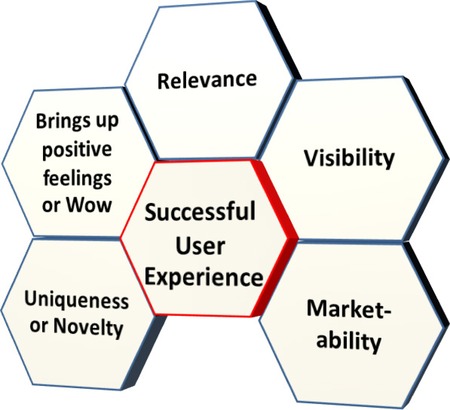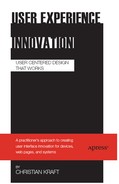Characteristics of Successful User Experience Innovation
Successful user experience innovation will make your consumer say “wow.” It will make your consumer smile, or it will make your consumer think, “This is clever,” or “What a positive surprise.” Success will only happen, however, if the user sees your solution, product, or service as relevant. Without need, there is no success.
Another equally important, but much subtler, thought that users may have when operating your successful user experience innovation is, “This just works,” or “I got my task done.” They may not know why they feel this, they may not know all the intelligent user experience design and technologies that enabled this almost seamless interaction, but they just feel in control and comfortable.
These feelings inside the user do not need to be strong—at least not all the time—but they should be there. They should be there when using the product the first time, when using the product longer term, when upgrading the product, and so forth.
Figure 2-3 shows the five main characteristics of a successful user experience innovation:
- Relevance
- Positive feelings or wow
- Perception of uniqueness or novelty
- Visibility
- Marketability

Figure 2-3. The five main elements of successful user experience innovation
Relevance
Relevance indicates that the user experience innovation you create is covering a real or latent need of the end users. Without need, the user experience innovation will not be successful.
Positive Feelings
A successful user experience innovation makes the user feel happy, satisfied, confident, comfortable, or positively surprised, and it may even give the user a wow experience with your product. Ideally, you want your users to love your product and the experience it gives.
To trigger positive feelings with the user, your design needs to be inviting, simple, and focused. Negative feelings should always be avoided, and the causes of these feelings (usually pain points) should be eliminated. Several of the methods described later in this book help you to achieve positive feelings for the end user.
Uniqueness or Novelty
A successful user experience innovation is perceived as novel and unique. The technologies, applications, and solutions you use to generate that perception may not be new at all, but what counts is the perception of the end users, not so much the reality of the situation.
For example, many people perceived the iPod as the first MP3 player. It's easy to do research and prove otherwise, but for many people the iPod was the first MP3 player they had ever heard of, and so was born the perception that the iPod was new and unique.
Visibility
You want to place your user experience innovation where a majority of your target users will experience it (e.g., in the core tasks of your product). User experience innovation placed in rarely visited corners of your product may give a small positive surprise when found, but it will rarely make your overall product successful.
In some cases, successful user experience innovation is done in a hidden way. Maybe you have designed underlying intelligence that guesses what the user wants, and the user will consequently—if the product is designed right—be left with a positive feeling that “it just works.” However, since the user still notices that the product “just works,” this innovation can hardly be called invisible.
In other words, innovation needs to be visible. Otherwise hardly anyone will ever see it, and hence it cannot be seen as an innovation.
Marketability
Successful user experience innovations can often be used in marketing campaigns. If your user experience is great, then it is difficult to find better ways to market your product than through these user experience innovations.
Anecdote

Figure 2-4. A mobile phone designed around a simple user experience
